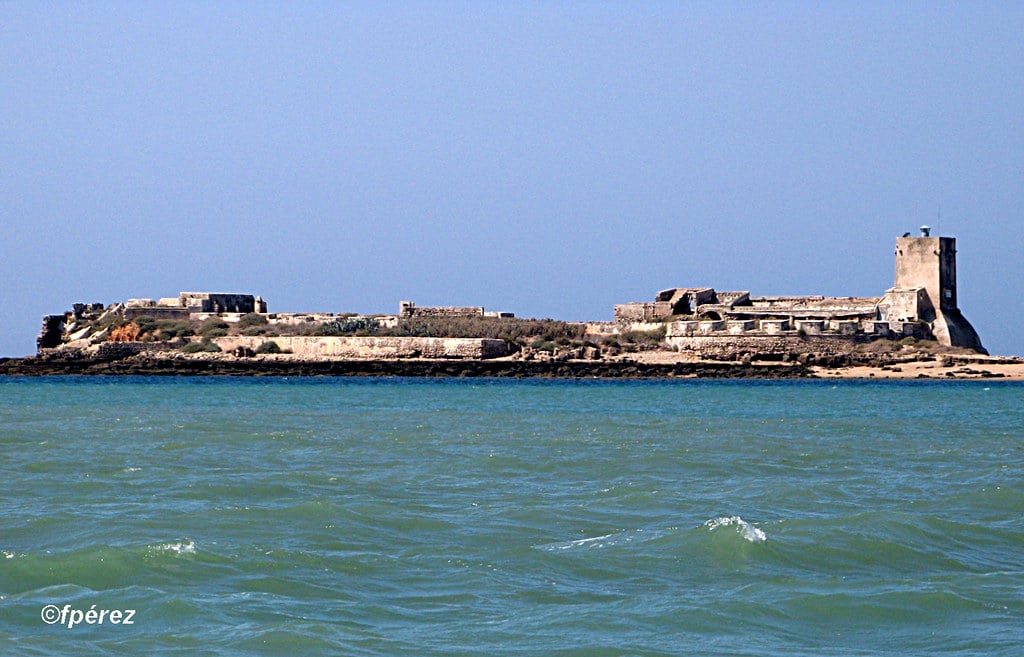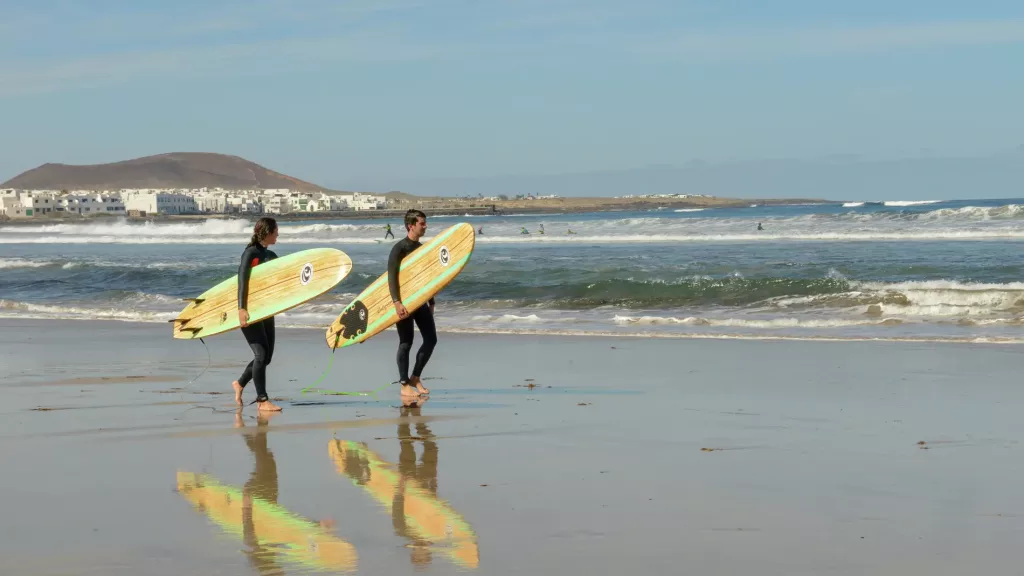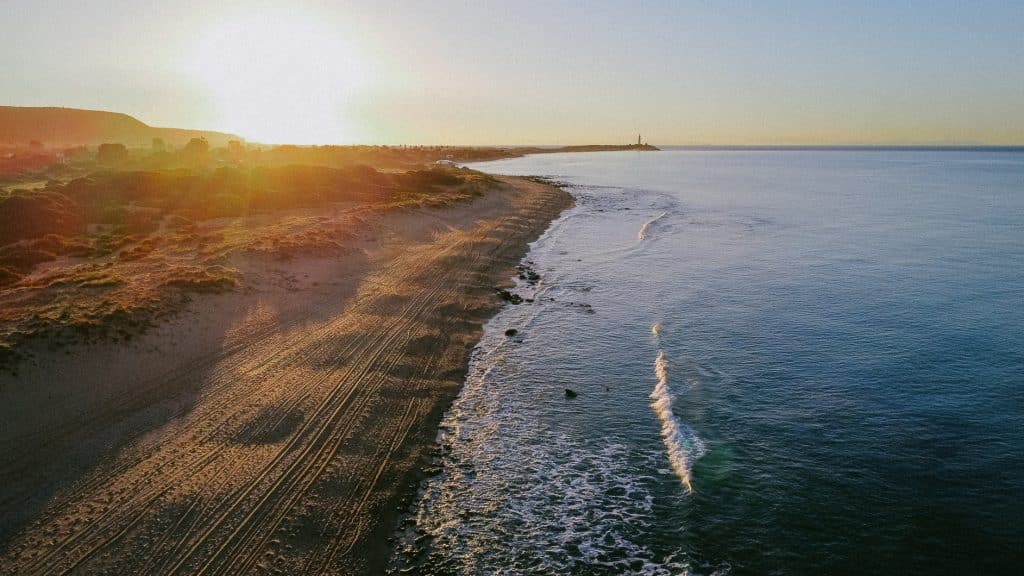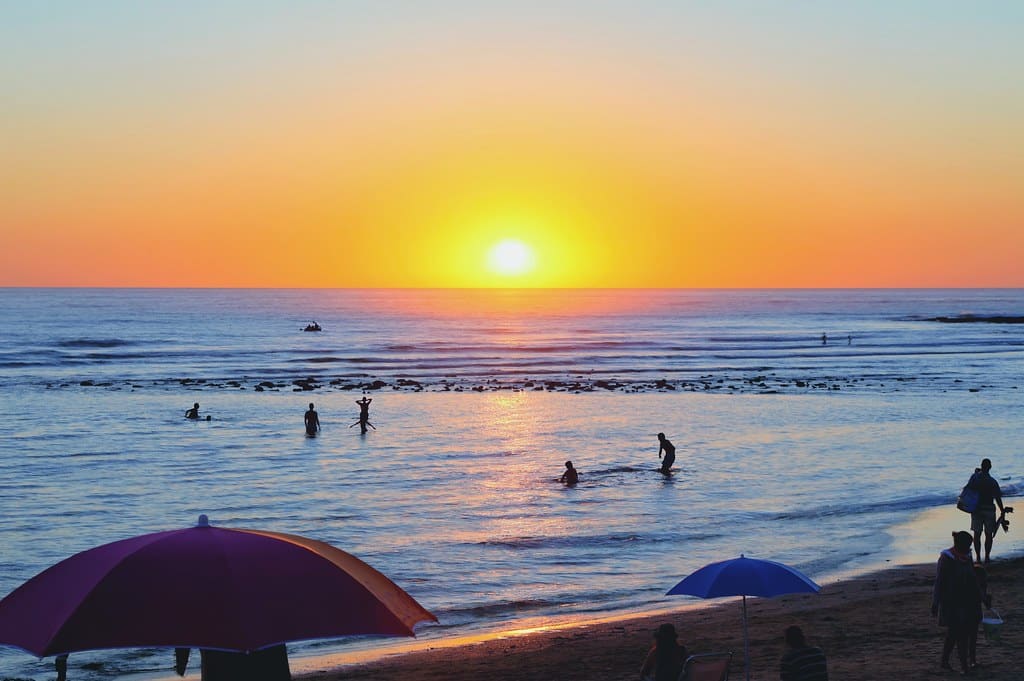The Sancti Petri Castle is located on an islet of the Bay of Cadizoff the coasts of San Fernando and Chiclana de la Frontera. This historical monument is noted for its rich history and impressive architecture. Built mainly between the 16th and 18th centurieshas played a key role in coastal surveillance and the defence of the region. In addition, its natural environment offers spectacular views y recreational activities for visitors.
Why is the castle of Sancti Petri so called?
The name of Sancti PetriAccording to Fray Geronimo de la Concepcion, it was established in the period of Christianity's expansion, around the 4th century AD, i.e. about 1600 years ago. It was customary at this time to baptise the great pagan shrines of antiquity with Christian names.
For this reason, the then destroyed temple of Hercules, where the ashes of this divinity were supposed to have rested, was renamed the islet of Sancti Petri, in reference to San Pedrothe first apostle. The same name was later given to the channel that separated the mainland from the island and later to the peninsula on which the trapper's settlement was located.
According to the 19th century historian José Guillermo Autrán, the first settlers of the Bay lived on the islet and then moved to the peninsula.
The Sancti Petri Castle is located on this islet at the mouth of the Caño Sancti Petriin the municipality of San Fernando. Historically, this place was linked to the legendary Temple of Melqartone of the most important temples of antiquity. According to historiography, this temple housed the remains of Hercules, the mythical founder of Cádiz, who came to the region to carry out one of his twelve labours: the theft of the bulls from King Geryon of Tartessos, whom he defeated in this feat. In addition, relics such as Teucro's belt and Pygmalion's tree were kept in the sanctuary.
It is said that important historical figures of antiquity such as Hamilcar Barca, Hannibal and Julius Caesar visited the temple. Strabo and other classical writers narrate that it was here that Hannibal offered vows to the god before the conquest of Italy, and where Julius Caesar wept before the statue of Alexander the Great, lamenting that he had not attained his greatness at the same age.
History of Sancti Petri Castle
The history of Sancti Petri Castle is rich and varied, spanning various periods that have marked its evolution and relevance in the region. From its origins in the 16th century, to its role during important historical conflicts, the castle has been a key witness to local history.
The islet of Sancti PetriThe watchtower, at the mouth of the channel of the same name, has played a crucial role in the defence of the Cadiz coast since ancient times. Built in 1610, the original watchtower was part of a system of coastal watchtowers ordered by Philip II to watch for enemy ships and Barbary pirates. In the 18th century, the fortress was enlarged with walls and outbuildings that transformed the castle into a key piece in protecting the port of Sancti Petri and prevent the penetration of ships towards Cadiz. Flanked by the Urrutia, San Genís and Aspiroz batteries, the defensive complex was feared for its efficiency.
Origins in the 16th century
The construction of Sancti Petri Castle began in the 16th century, at a time when coastal surveillance became an urgent necessity. Philip II, faced with the constant danger of pirate raids, ordered the creation of a system of fortifications along the Andalusian coast. This castle, with its design adapted to the topography of the islet, was erected as an important point of defence.
The Temple of Melkart: Ancient Background
The islet on which the castle stands is of value not only for its military construction, but also for its earlier history. It once housed a temple dedicated to Melkart, a god associated with Phoenician mythology. This aspect adds a level of historical complexity to the site, although no direct remains of that temple can be seen in the present structure.
Defence during the War of Independence
During the War of Independence, which took place between 1808 and 1814, Sancti Petri Castle was constantly under attack. Napoleonic forces carried out sieges that tested the resistance of the fortress. Despite the damage suffered during this period, the castle has endured as a symbol of resistance and local defence. The actions carried out inside the castle were decisive in the context of the war, contributing to the defence of Cádiz and its region.
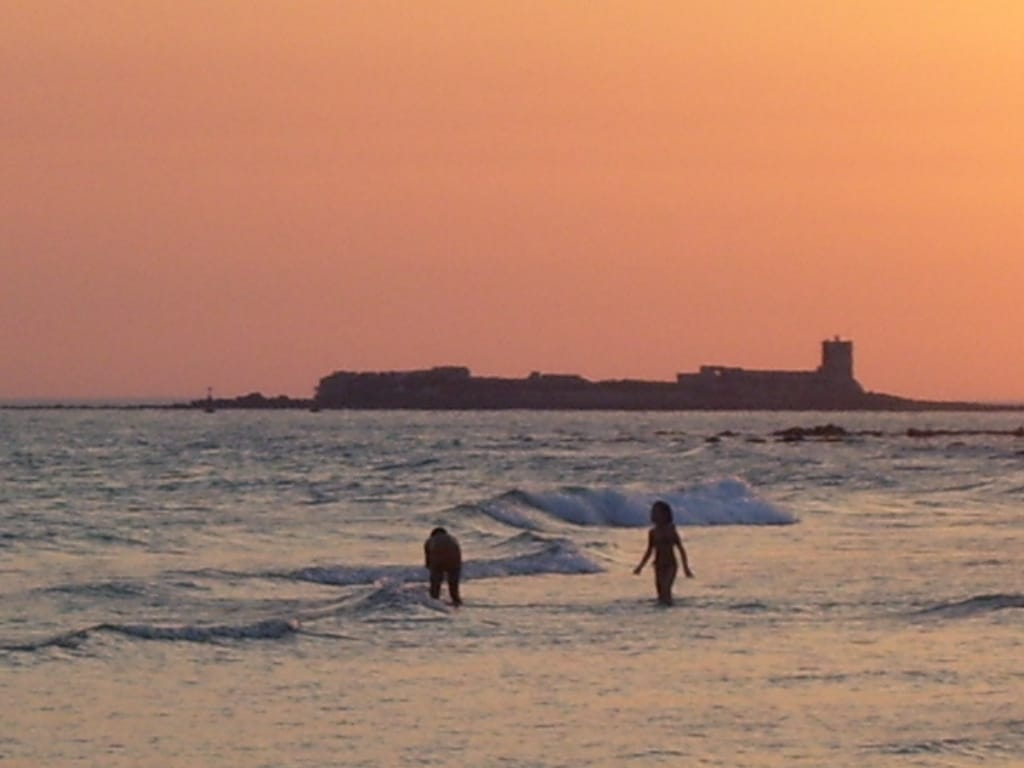
Architecture and Structure of the Castle
The architecture of Sancti Petri Castle is a reflection of its rich history and military function. The structure has characteristics that not only endow it with beauty, but also demonstrate its resistance and adaptability to the environment.
The Sancti Petri Castle is an imposing architectural ensemble. Its tower-atalaya, with a trapezoidal base and built in ostionera stone (a typical material of the area), stands out as the most distinctive element. This stone, extracted from the local quarries of the Sancti Petri beach and the Barrosa, gives it great resistance and originality.
The castle walls, designed to resist the artillery impacts of enemy ships, surround the islet and adapt to its irregular shape. Inside, you can find rooms such as warehouses, housing for the garrison and a cistern that guaranteed the water supply.
Architectural highlights
Sancti Petri Castle is distinguished by several architectural elements that capture the attention of visitors. Among these, the machicolations play a fundamental role, located at the corners of the tower. These structures allow shots to be fired towards the outside, facilitating defence.
Another important element is the irregular façade of the castle, which adapts to the topography of the islet. This particularity not only adds to the uniqueness of the building, but also optimises its defensive function. The sturdy walls surrounding the castle are also distinctive features, designed to resist attacks and protect its occupants.
The quadrangular tower and its lighthouse
The quadrangular tower is the most emblematic part of the castle. Its robust design has a truncated trapezoidal base, ensuring stability and resistance to attack. The height of the tower offers a privileged view of the surroundings, allowing effective surveillance of maritime traffic.
At the top, a lighthouse stands, which not only serves as a guide for navigators, but also adds an aesthetic touch that complements the landscape. This lighthouse, which has been restored several times, symbolises the connection of the castle with its maritime environment and the region's sailing history.
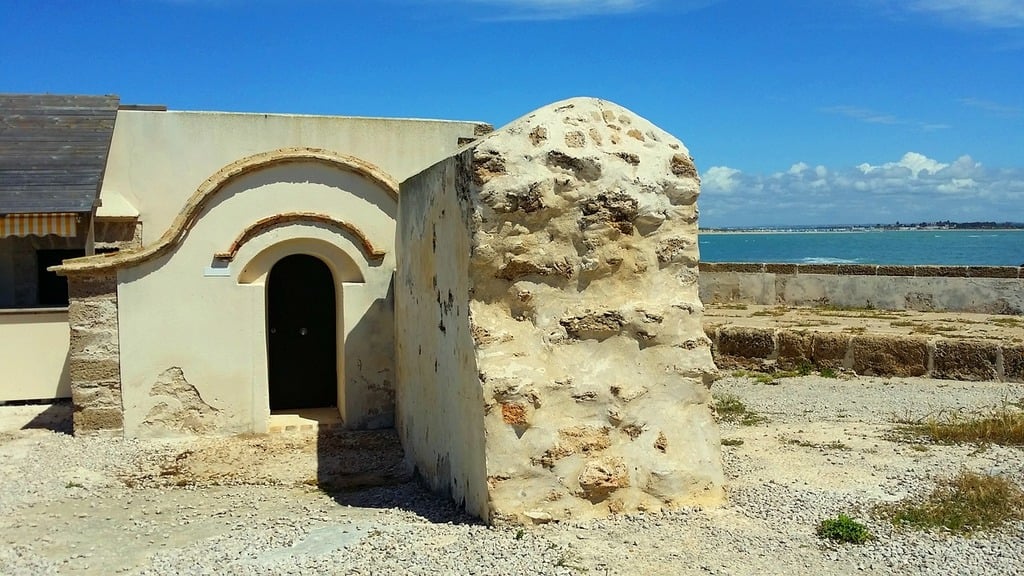
Building materials: Oyster stone
The construction of the castle used oyster stone, a material characteristic of the area that is extracted from the seabed. This type of stone, which is highly resistant, was fundamental to the structure of the castle, guaranteeing its durability over the centuries.
The choice of oyster stone also reflects the relationship between the castle and the natural resources available in the environment. The construction techniques employed, including the use of specific mortars, demonstrate the advanced architectural knowledge of the time and adaptability to local conditions.
Strategic and Military Significance
Sancti Petri Castle is of significant importance in strategic and military terms, both for its defensive prerogative and for its support in coastal surveillance. Its design and geographical position made it an essential bastion for the protection of the Cádiz coastline.
Coastal and defensive surveillance
The castle's location on an islet off the coasts of San Fernando and Chiclana de la Frontera was fundamental for establishing an effective surveillance system. This position allowed it to detect incursions by enemy ships and to communicate alerts to other nearby fortifications.
The watchtower system was supplemented by a series of towers and bastions in the region, creating a network that reinforced security at sea. The castle walls were designed to allow for crossfire, which enhanced defensive capabilities during an attack.
Don't forget to bring your camera, as the photos of the castle of Sancti Petri at sunset are simply unforgettable.
The Castle in the defence of Cadiz
During the War of Independence, Sancti Petri Castle played a crucial role in the defence of Cadiz. Despite multiple attacks by Napoleonic troops between 1810 and 1812, it remained a symbol of resistance. Its structure allowed it to resist attempts to besiege the city, providing a last bastion of defence at critical moments.
The castle, being part of the defensive perimeter of Cadiz, not only safeguarded its access by sea, but also acted as a strategic control point against the possibility of land invasions. Its importance in this context highlights the multifunctional function it fulfilled throughout its history.
Comparison with other fortifications
When comparing the Castillo de Sancti Petri with other fortifications of the period, similarities and differences in design and function are apparent. Notable fortifications, such as the Tavira Tower in Cadiz, also had a defensive function, but their focus was more on urban surveillance than direct military protection.
- The Alhambra in Granada and its defensive features, such as the towers and walls, have similarities in the use of machicolations and architectural elements for defence.
- Castles such as San Sebastián in the Bay of Cádiz itself shared the function of protecting the city, although their focus was more maritime than terrestrial.
The uniqueness of Sancti Petri Castle lies in its combination of defensive architectural features and its strategic location, which made it a point of reference in the coastal surveillance of the area. Each fortification had its specific role in the region's defensive network, adapting to the prevailing needs of each historical period.
The Natural Environment of the Castle
The landscape surrounding this fortress is a primary element that enriches the visitor experience. The interaction between history and nature creates a unique space, inviting exploration and contemplation.
Location within the Bay of Cádiz Natural Park
El Castillo is part of the Bay of Cadiz Natural Park, a protected area that encompasses a series of marine and terrestrial ecosystems. This park is fundamental for the conservation of biodiversity in the region and is considered one of the most important wetlands in Europe.
Access to the castle allows visitors to connect with the natural wealth offered by the surroundings. The nearby lagoons, marshes and beaches form a harmonious whole that can be enjoyed all year round.
Biodiversity and environmental values
The Natural Park is home to a wide variety of flora and fauna species, contributing to its ecological importance. Among the most outstanding elements of its biodiversity are:
- More than 300 species of birds, many of which are migratory, find a safe haven here.
- Characteristic marsh vegetation, such as reeds and rushes, which are essential for maintaining the ecological balance.
- A rich marine fauna, including various species of fish, crustaceans and molluscs.
This environment is not only crucial for ecosystems, but also provides important services to the community, including climate regulation and water purification.
Views of the sea and nearby beaches
The breathtaking panoramic views from the castle out to sea and the nearby beaches are another notable attraction. The views are especially captivating during sunsets, where the sky is tinged with warm tones that reflect on the water.
The beaches of Camposoto and La Barrosa, located a short distance away, are perfect for enjoying outdoor activities. These beaches, together with their crystal clear waters, make the surroundings a popular destination for tourism. You can enjoy various activities, such as walks along the shore, water sports and watching the rich birdlife that inhabits the area.
The natural environment surrounding the Sancti Petri Castle is not only an impressive visual spectacle, but also acts as a vital ecosystem that enriches the experience of those who visit it.
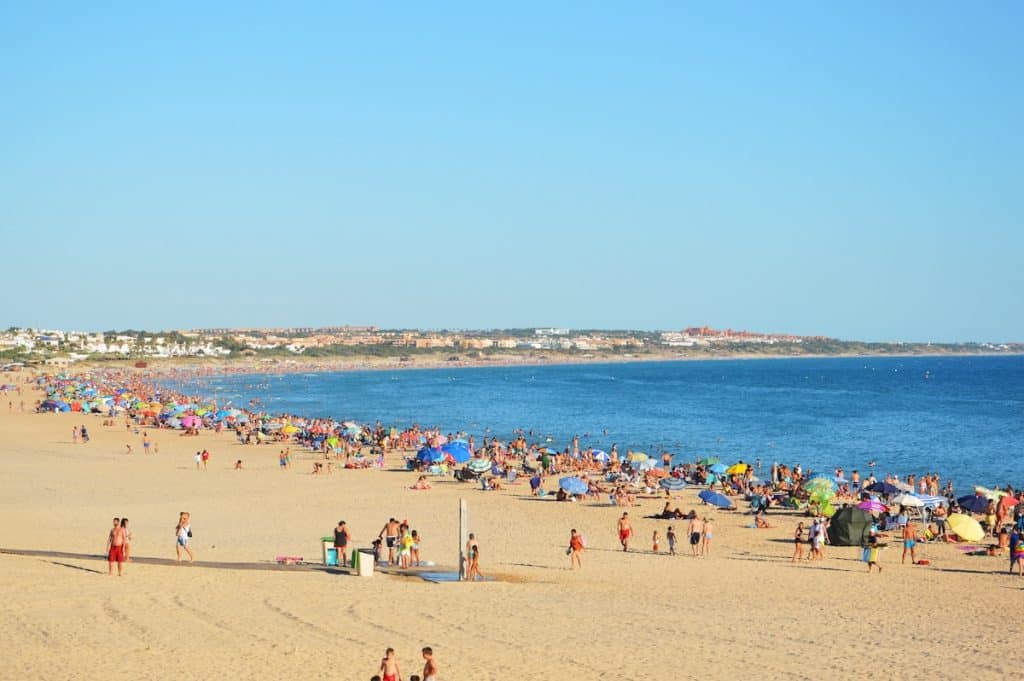
Activities for Visitors
Sancti Petri Castle offers a variety of activities that allow visitors to enjoy its history, natural surroundings and spectacular views. From cultural experiences to recreational activities, there is something for everyone.
In 2010, the castle underwent a comprehensive refurbishment to commemorate the Bicentenary of the Cortes de Cádiz. This restoration, although controversial due to some changes, restored the castle to its majesty, allowing visitors to tour its facilities and enjoy its views.
Nowadays, carrying out a visit to the Castle of Sancti Petri is one of the most recommended activities if you visit the coast of Cadiz. For those who are wondering about the visit to the Castle of Sancti PetriThe excursions usually include a boat transfer and guides who explain the fascinating history of this fortress. Bien de Interés CulturalThe castle is an example of how to preserve historical heritage while adapting it to modern tourism.
The Sancti Petri Castle offers much more than history. The visits include didactic explanations about its legacy, the tuna fisheries (almadrabas), and the environmental values of the island. In addition, astronomy workshops, concerts, gastronomic events and activities such as bird watching are organised.
To get to the castle, you have several options:
- Boat trip from the Marina of Gallineras (San Fernando) or the Sancti Petri Marina (Chiclana de la Frontera).
- Kayak trip from Punta del Boquerón (San Fernando) or Sancti Petri Beach (Chiclana de la Frontera).
- Arrival by own means.
The castle also has a bar service, perfect for tapas, lunch or dinner under the starry summer sky after a day of exploring.
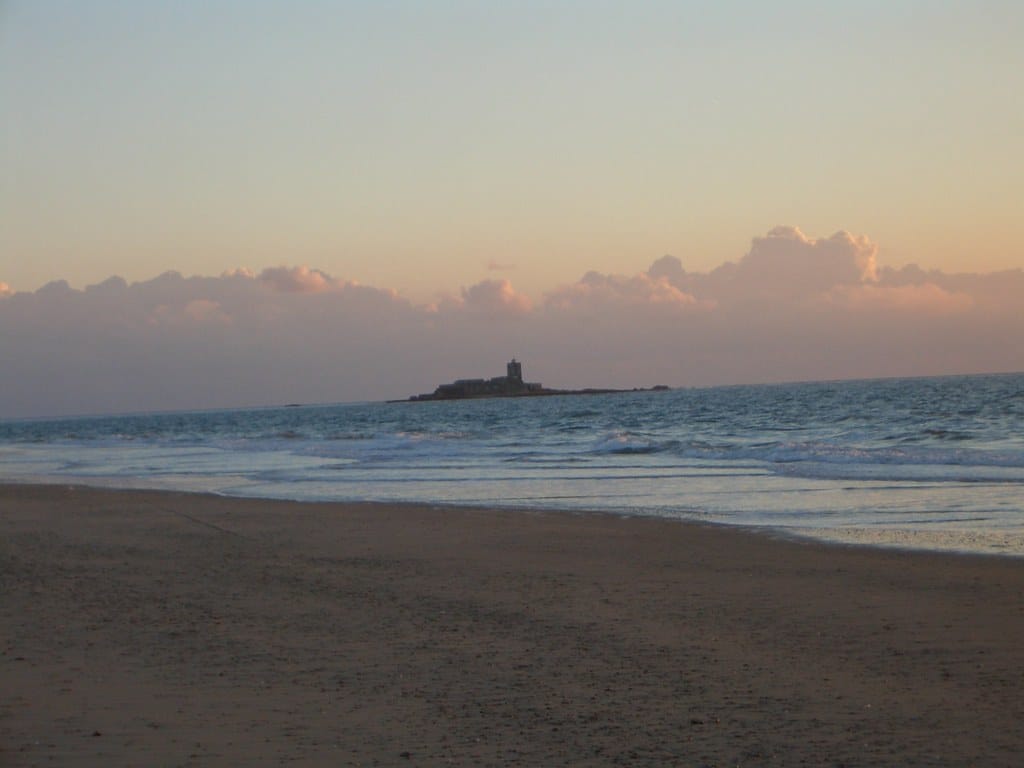
Guided tours and mobile self-guides
Guided tours are a great way to explore the nooks and crannies of this fortress. With expert guides, visitors learn about the stories and legends that have shaped this iconic site. The guides are designed to be interactive, making use of visual aids to enrich the experience.
There is also a mobile application that allows visitors to take their own tour. This self-guided tour is equipped with digital signage, offering relevant information about each area of the castle, from historical data to curiosities about the buildings that make up the castle.
Sunset experiences: yoga and cocktails
The castle has become a privileged space for those seeking unique sunset experiences. The yoga classes organised on the terrace of the castle allow participants to relax and connect with nature while enjoying breathtaking views of the sea.
After the yoga session, it is common to enjoy cocktails in a magical setting, where the sunsets create a spectacular backdrop. This combination of exercise and relaxation is very popular with visitors, making it a memorable experience that connects body and mind with the natural environment.
Water sports: kayaking in the surroundings of the islet
The natural surroundings of Castillo de Sancti Petri are ideal for water sports. Kayak tours are offered, allowing visitors to explore the bay from a different perspective. Paddle boarding in calm waters provides the opportunity to observe the local fauna and flora, including various species of migratory birds and the rich biodiversity of the area.
The kayak tours are guided, which adds extra value. The guides share information about the ecosystem of the Bay of Cadiz and help participants to make the most of this activity. This experience is suitable for beginners as well as for those looking for a greater challenge on the water.
Opening hours and prices to visit the Sancti Petri Castle
- Visit without a guide: Monday to Sunday, from 10:00 a.m. to one hour before sunset (except Friday, from 2:00 p.m.). Price: €5/adults and children over 11; €3/children aged 5-11.
- Guided tour: Monday to Sunday, same opening times. Price: 10 €/adults and children over 11 years old; 5 €/children from 5 to 11 years old.
- Guided tour at sunset: Two hours before sunset. Price: €13/adults and children over 11; €8/children aged 5 to 11 (includes drink).
Note: Rates do not include the cost of the boat or kayak transfer to the castle.
Events and Celebrations
The Sancti Petri Castle has become an ideal venue for different events and celebrations, thanks to its uniqueness and attractiveness. From weddings to cultural exhibitions, the castle offers a unique atmosphere that embellishes any occasion.
Weddings and corporate events
The weddings in this emblematic castle are characterised by their celebration in a dreamlike setting. The bride and groom enjoy unrivalled views and a historic atmosphere that enhances their special day. Attention to detail, coupled with professional service, ensures that each wedding is unique.
On the other hand, the corporate events benefit from the versatility of the venue. Whether it's a meeting, seminar or product presentation, the facilities allow the space to be adapted to suit the client's needs. Views of the surrounding nature add an inspiring touch to the working environment, ideal for fostering creativity and collaboration.
Exhibitions and live music
Sancti Petri Castle is also a cultural meeting point. The temporary exhibitions organised in its facilities are an excellent opportunity to enjoy the work of local and renowned artists. These exhibitions not only promote art, but also attract tourists and locals interested in culture.
Live music is another element that enriches the castle's offer. Musical events held in the open air allow visitors to enjoy good music in a natural setting at sunset, creating an unforgettable experience for those who attend.
Flexibility of space for customised events
One of the great advantages of the Castillo de Sancti Petri is its flexibility. Event planners can customise every detail. From decorations to the choice of menu, each celebration can be tailored to the wishes and needs of its hosts.
- Modular spaces that allow the capacity to be increased or reduced depending on the type of event.
- Varied catering options, ranging from local tapas to gourmet menus.
- Possibility of incorporating complementary activities, such as workshops or recreational activities, as they enrich the guests' experience.
The various logistical alternatives, together with the spectacular surroundings, position the castle as a privileged location for any celebration or significant event. Organisers have the freedom to design completely bespoke events, highlighting the uniqueness of each celebration.
Visitors' Opinions
The experiences of visitors to the castle reflect the cultural richness and natural beauty of the surroundings. Below are some of the most outstanding opinions of visitors who have enjoyed this emblematic place.
Outstanding experiences
Visitors often share their impressions of the uniqueness of the castle and the activities available. Among the most valued experiences are:
- Yoga at sunset: Many have praised the yoga sessions organised on the terrace, where the tranquillity of the surroundings adds to the beauty of the views. The combination of meditation and nature creates unforgettable moments.
- Cocktails with a view: Enjoying a cocktail while taking in the scenery has become one of the most recommended experiences. Visitors appreciate the relaxed atmosphere and the attention to detail of the operators who run the service.
- Interactive guided tours: The self-guided tour via a mobile app has received positive feedback. It allows visitors to explore the castle at their own pace, enriching their knowledge of the history and curiosities of the site.
Ratings about the sunsets from the terrace
The sunset spectacle from the terrace of the Sancti Petri castle is one of the highlights in visitors' reviews. Reviews include:
- A natural spectacle: Many describe the sunsets as a "festival of sensations", where shades of gold and red are reflected in the sea, creating a breathtaking sight that lingers in the memory for a long time to come.
- A meeting place: The terrace is transformed into a social meeting point where friends and families enjoy the evening. Some commentators point out that it is the perfect place to enjoy company while admiring the scenery.
- Impressive photography: For photography enthusiasts, sunsets offer a unique opportunity to capture unforgettable images. The views highlight the scenic beauty that can be captured in every moment.
Sancti Petri is an undiscovered jewel
The Sancti Petri Castlealso known as the Sancti Petri castleand its surroundings are a destination that combines history, nature and adventure.
From the legends of the Temple of Hercules Gaditano to the calm waters of its beaches, every corner of the Sancti Petri village invites visitors to discover a piece of the soul of Cádiz, whether you are a history lover, a water sports enthusiast or simply looking for a place to relax, Sancti Petri has something for you.
Come and live an unforgettable experience in this unique corner of Andalusia!
